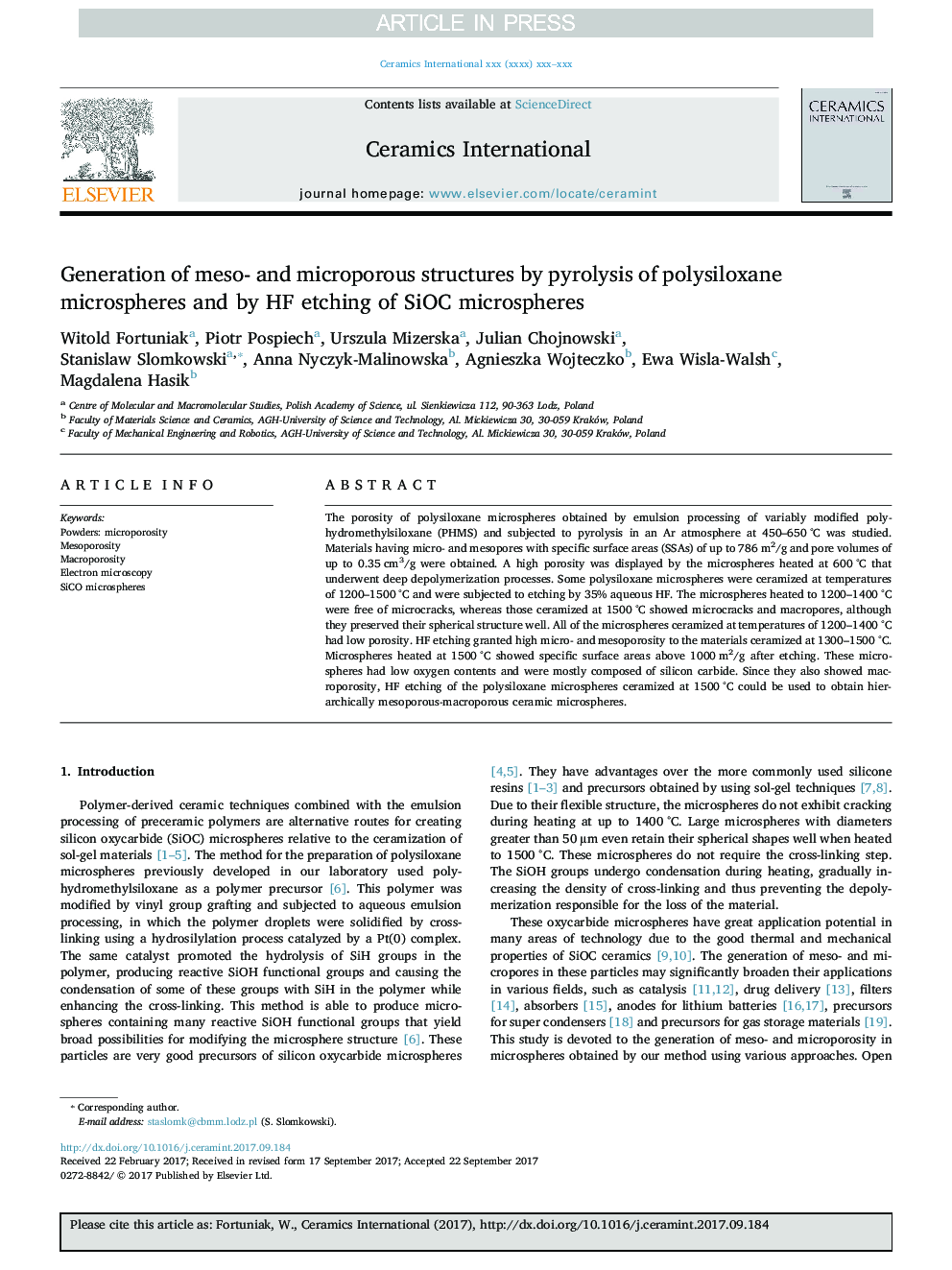| Article ID | Journal | Published Year | Pages | File Type |
|---|---|---|---|---|
| 7889022 | Ceramics International | 2018 | 10 Pages |
Abstract
The porosity of polysiloxane microspheres obtained by emulsion processing of variably modified polyhydromethylsiloxane (PHMS) and subjected to pyrolysis in an Ar atmosphere at 450-650 °C was studied. Materials having micro- and mesopores with specific surface areas (SSAs) of up to 786 m2/g and pore volumes of up to 0.35 cm3/g were obtained. A high porosity was displayed by the microspheres heated at 600 °C that underwent deep depolymerization processes. Some polysiloxane microspheres were ceramized at temperatures of 1200-1500 °C and were subjected to etching by 35% aqueous HF. The microspheres heated to 1200-1400 °C were free of microcracks, whereas those ceramized at 1500 °C showed microcracks and macropores, although they preserved their spherical structure well. All of the microspheres ceramized at temperatures of 1200-1400 °C had low porosity. HF etching granted high micro- and mesoporosity to the materials ceramized at 1300-1500 °C. Microspheres heated at 1500 °C showed specific surface areas above 1000 m2/g after etching. These microspheres had low oxygen contents and were mostly composed of silicon carbide. Since they also showed macroporosity, HF etching of the polysiloxane microspheres ceramized at 1500 °C could be used to obtain hierarchically mesoporous-macroporous ceramic microspheres.
Related Topics
Physical Sciences and Engineering
Materials Science
Ceramics and Composites
Authors
Witold Fortuniak, Piotr Pospiech, Urszula Mizerska, Julian Chojnowski, Stanislaw Slomkowski, Anna Nyczyk-Malinowska, Agnieszka Wojteczko, Ewa Wisla-Walsh, Magdalena Hasik,
